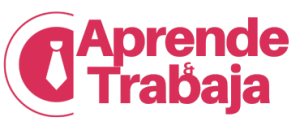Personal Finance Trendings of 2025: How People Are Rethinking Money and Wealth
Discover the top personal finance trends of 2025, from AI budgeting tools to the rise of sustainable investing and financial culture.
2025 is reshaping how we save, spend, and invest.
The New Era of Money Management
In 2025, personal finance stopped being a private, static subject and became a dynamic lifestyle movement.
People are no longer just saving money—they are rethinking their entire financial behavior with technology, community, and purpose.
The shift toward smarter money habits has been driven by global inflation adjustments, rapid tech adoption, and a renewed focus on mental and financial well-being. Let’s explore how these trends are defining the personal finance scene in 2025.

1. AI-Powered Budgeting Becomes Mainstream
Artificial intelligence has become the personal finance assistant everyone can afford. From apps that predict your expenses to chatbots that negotiate bills, AI has moved from novelty to necessity.
Platforms like Cleo, YNAB AI, and Revolut’s new “Smart Budget” are helping users make real-time spending decisions. These tools don’t just track numbers—they learn user behavior and suggest specific actions to improve savings.
Personalized recommendations, voice interaction, and predictive analytics are making financial planning more intuitive than ever before.
2. The Rise of Financial Wellness Culture
In 2025, managing money is about balance, not just profit. The idea of financial wellness—a blend of mental health and financial stability—has become a global focus.
More people are linking emotional well-being to financial habits. Companies are offering “financial therapy” benefits, where employees receive coaching on money stress and goal-setting.
Podcasts, social media creators, and online workshops are spreading the message that good finances start with emotional control, not just income. This holistic approach is helping millions find peace with money.
3. Sustainable and Ethical Investing
Investors in 2025 are demanding purpose-driven portfolios. Sustainability and ethics are no longer side options—they’re priorities.
Millennials and Gen Z, now forming the majority of new investors, are choosing ESG (Environmental, Social, and Governance) funds, renewable energy projects, and companies with fair labor practices.
This shift isn’t only moral—it’s profitable. Green bonds, clean tech startups, and carbon credit platforms are attracting billions in investment capital. Finance has become a force for both wealth and world change.
4. Micro-Investing and Fractional Ownership
Ownership is being redefined. With the cost of living still high, micro-investing platforms have opened new doors for those starting small.
Apps like Acorns, Public, and Shares let users invest just a few dollars into major companies or real estate funds. Fractional ownership also extends to art, collectibles, and luxury goods through tokenized investments.
These tools are breaking down barriers to wealth-building, empowering first-time investors to grow portfolios without traditional limits.
5. The Cashless and Contactless Revolution
Digital wallets are no longer just convenient—they’re dominant. By 2025, nearly 80% of daily transactions in major economies happen without physical cash.
From QR payments in street markets to tap-to-pay rings and watches, contactless spending has become the global standard.
This transition is reshaping consumer habits. People are tracking every cent digitally, with instant visibility into their finances—reducing errors and improving accountability.
6. The “Side Hustle 2.0” Movement
In 2025, side hustles aren’t just for extra cash—they’re tools for independence. Thanks to automation, social platforms, and digital marketplaces, people are creating micro-businesses around their skills.
AI tools now handle marketing, bookkeeping, and customer engagement, letting freelancers focus on creativity. Platforms like Etsy, Fiverr, and Gumroad have evolved into ecosystems for entrepreneurs.
The new generation of earners sees side hustles not as hobbies, but as a path toward financial autonomy and flexible living.
7. Community-Based Saving and Lending
Peer-to-peer finance is thriving again—but with a digital twist. Community savings groups and online lending circles are reappearing through fintech innovation.
Platforms allow users to pool funds for shared goals, such as home ownership or small business financing. Blockchain verification ensures transparency and trust.
This modern revival of traditional cooperation proves that finance can be both social and secure.
The Future of Personal Finance
The personal finance landscape of 2025 shows that money is no longer about control—it’s about connection. People want financial systems that understand them, support their values, and help them grow.
As artificial intelligence, digital platforms, and ethical investing continue to evolve, personal finance is becoming more inclusive, data-driven, and emotionally intelligent.
In short, 2025 isn’t just about earning more. It’s about making money mean more.





